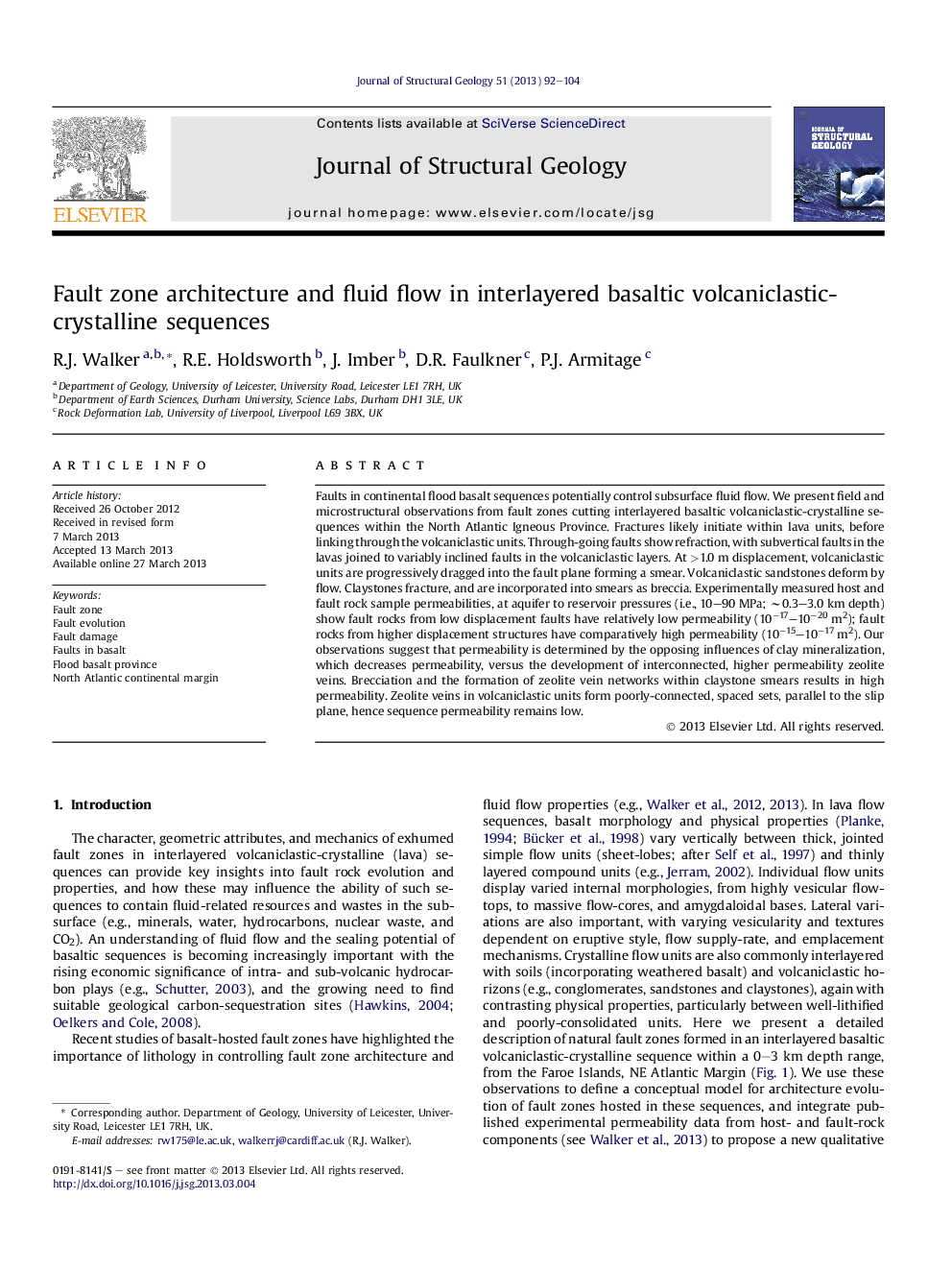| Article ID | Journal | Published Year | Pages | File Type |
|---|---|---|---|---|
| 4733190 | Journal of Structural Geology | 2013 | 13 Pages |
•We present observations for faults in volcaniclastic-crystalline sequences.•Host and fault rock samples are used to constrain fault permeability structure.•We show that host rock alteration to clay minerals serves to decrease permeability.•Zeolite veins cut clay mineralization causing a relative permeability increase.•Field and permeability data are combined into a new permeability evolution model.
Faults in continental flood basalt sequences potentially control subsurface fluid flow. We present field and microstructural observations from fault zones cutting interlayered basaltic volcaniclastic-crystalline sequences within the North Atlantic Igneous Province. Fractures likely initiate within lava units, before linking through the volcaniclastic units. Through-going faults show refraction, with subvertical faults in the lavas joined to variably inclined faults in the volcaniclastic layers. At >1.0 m displacement, volcaniclastic units are progressively dragged into the fault plane forming a smear. Volcaniclastic sandstones deform by flow. Claystones fracture, and are incorporated into smears as breccia. Experimentally measured host and fault rock sample permeabilities, at aquifer to reservoir pressures (i.e., 10–90 MPa; ∼0.3–3.0 km depth) show fault rocks from low displacement faults have relatively low permeability (10−17–10−20 m2); fault rocks from higher displacement structures have comparatively high permeability (10−15–10−17 m2). Our observations suggest that permeability is determined by the opposing influences of clay mineralization, which decreases permeability, versus the development of interconnected, higher permeability zeolite veins. Brecciation and the formation of zeolite vein networks within claystone smears results in high permeability. Zeolite veins in volcaniclastic units form poorly-connected, spaced sets, parallel to the slip plane, hence sequence permeability remains low.
